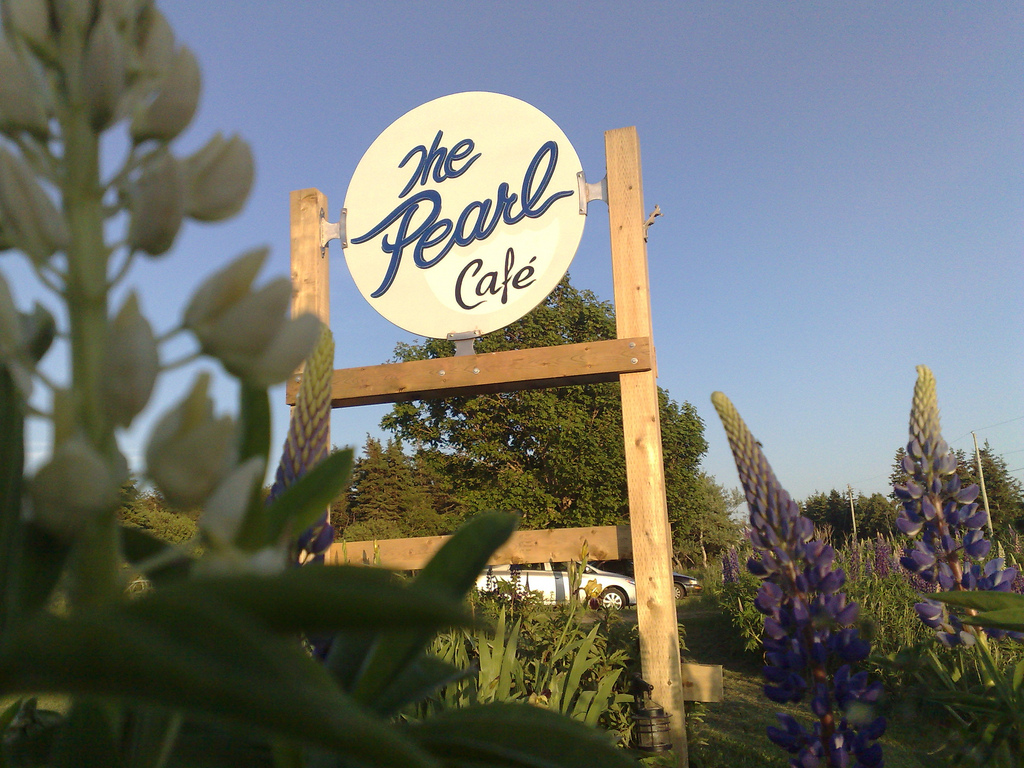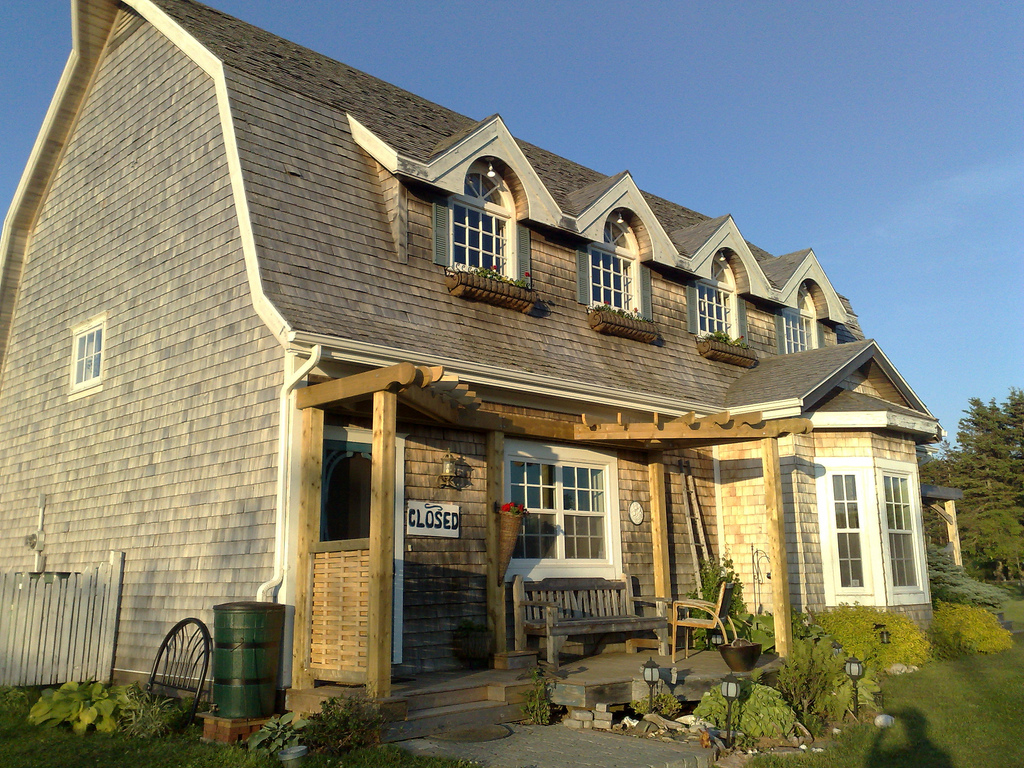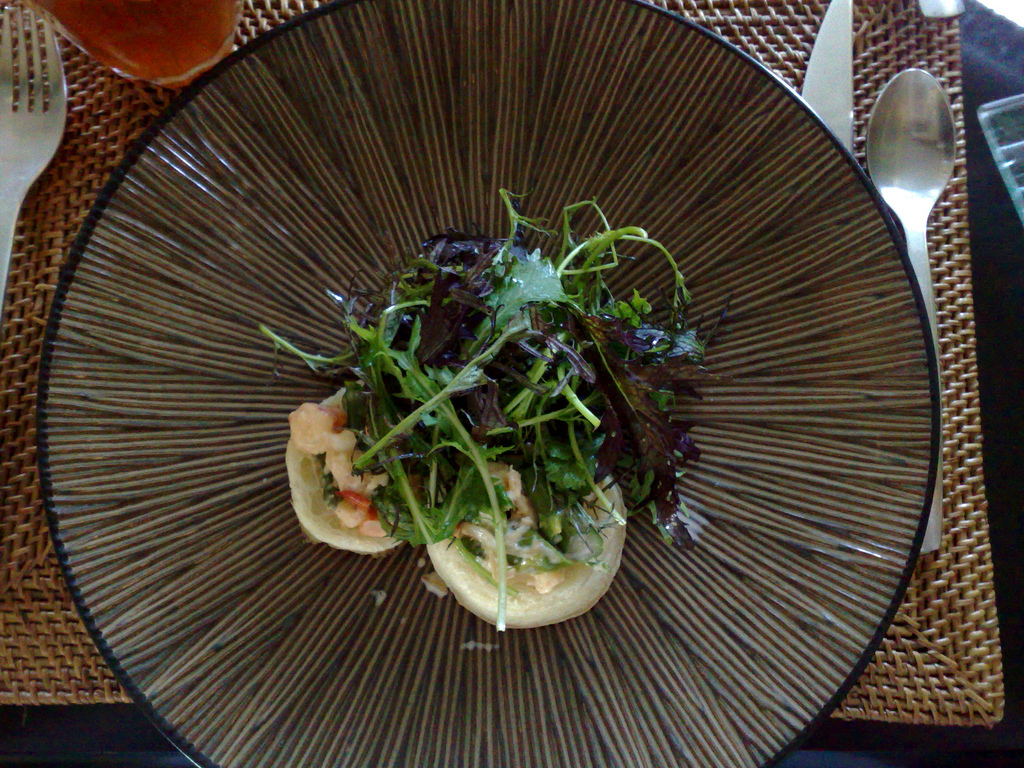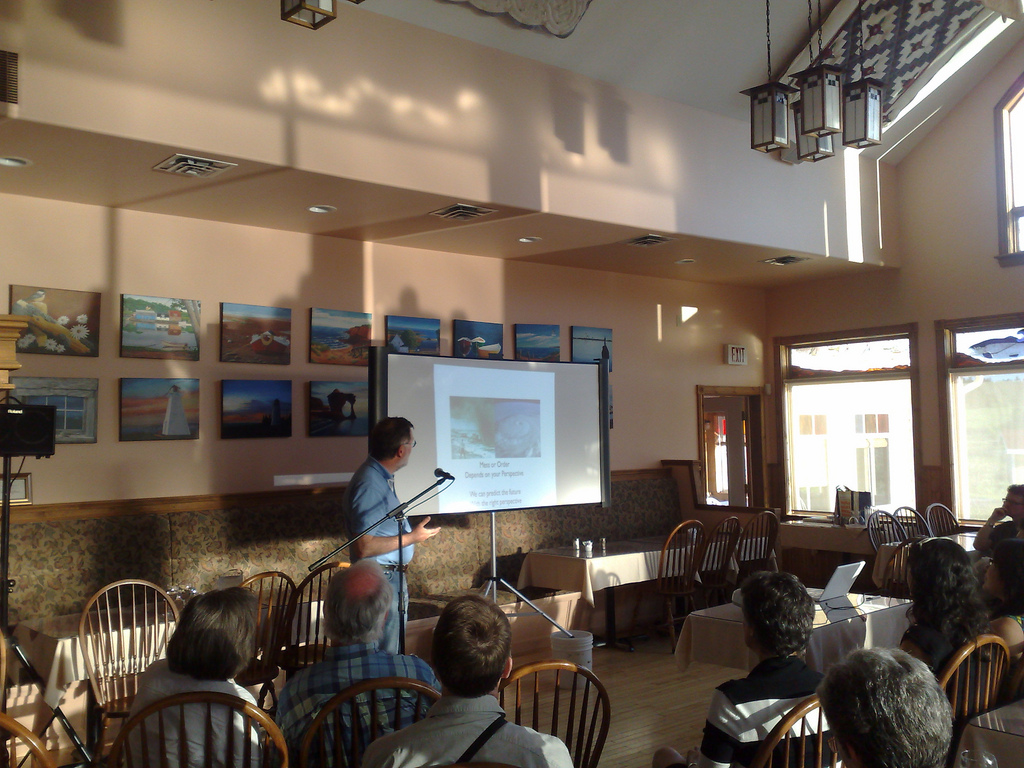In the normal course of affairs, at least for the past 5 years, this week would find me soaking up the sun in Copenhagen: visiting friends, preparing for the reboot conference (in stasis this year), drinking good coffee and riding a bicycle.
It’s no exaggeration to say that my first visit to the city, for reboot 7, changed my life for the better: I met a host of people who I still call good friends, I saw Plazes demonstrated for the first time, I started to get more deeply involved in open source, and, perhaps most importantly, I started a journey toward seeing Europe as something everyday (albeit a rather more interesting and exotic everyday than I’m used to) – a place I could comfortably visit often, and perhaps relocate to.
Over the 5 years I went to reboot I gradually migrated from visiting for the conference, and happening to see friends, to visiting friends and happening to go to the conference. Who would have thought?
So yesterday Penny turned six years old without me (I was there when she turned four). And this week my Danish friends will celebrate Sankt Hans without me (perhaps we’ll have to light a bonfire in our Charlottetown back yard on June 23?).
And I’ll be forced to come up with my own paradigm-shifting ideas instead of letting reboot come up with them for me.
Nathan Sizemore was kind enough to shoot video of all of the Pecha Kucha presentations on Thursday night, and here they all are. The video setup was imperfect: crazy lighting conditions, a tiny screen, bad audio, etc., and Nathan did wonders making it all work as well as it did.
- Bruce MacNaughton: Experiences in the Key of D
- Robert Paterson: What is going on? How did we get here? Are we hopeless? Is there a future?
- Valerie Bang-Jensen: Books in Bloom: The Story of a Garden
- Katie Cousins: Farming’s Sustainable Answer: Youth Involvement
- Paul Lopes: The Story of a Website
- Frances Gertsch: Stories of a Northern Land: Working in Nunavut’s National Parks
- Aaron Stavert: Sustainable Architecture: The Importance of Place
- Peter Rukavina: Making Envelopes with an Adana Eight Five
We’d been trying to eat out at The Pearl for two summers in a row with no success. Our friend Ann said we had to go. And so we tried. But never with any advance planning; and so every time we showed up on the spur of the moment they were full. Friendly, but full.
So this year I decided to get crafty and with Catherine’s birthday on Friday I emailed a request for a reservation on Monday. I heard back with an enthusiastic confirmation within hours.
It was worth the wait.


One the drive out to The Pearl – they’re on the road from North Rustico to Cavendish on Prince Edward Island’s north shore – we passed Dayboat – remember Dayboat?
Or, rather, we passed the empty carcass of what used to be Dayboat, now closed and with a for sale sign on the lawn. Dayboat always stuck me as a restaurant trying much too hard to be something more than it had any right to be: it was like one of the self-proclaimed popular kids from high school who, in the end, were neither interesting nor worthy of much envy.
The Pearl is the antithesis of this: there is not a drop of braggadocio in the place, and yet, in a quiet, unassuming way, everything from space to service to food is almost perfect. The Pearl doesn’t have pretensions, doesn’t claim to be something it’s not, it is just simply excellent.
The room, on the ground floor of a wooden house, is eclectically decorated without being cluttered. I was sitting on an old church pew on a comfortable cushion and felt immediately at home. The view out the back windows is of Island farm fields; they have good taste in music.
The service was flawless: servers were witty, kind, and thoughtful of Oliver (such a rarity in restaurants; “we can make anything he might like” was such a refreshing counterpoint to the usual “chicken fingers or spaghetti?”).
I had the $45 prix fixe menu, part of the Dine Around initiative of the PEI Restaurant Association. It was a good choice: a lobster and asparagus tart to start (so good it brought tears to my eyes), a well-cooked piece of halibut served over potato salad for a main, and a rhubarb tiramisu for dessert. I had an espresso with dessert and I’m happy to report that it might be some of the best-prepared coffee available on the Island.

Oliver had crepes made with Kim Dormaar’s smoked salmon; he devoured them quickly. The chocolate pot de creme he had for dessert was equally quick to go down; I grabbed a spoon or two, and it was dense, dark and luscious.
Catherine started with oysters, had the scallops as a main, and a tart for dessert (which they discretely put a birthday candle in without me even asking); she really enjoyed all of these.
Prince Edward Island being Prince Edward Island, we knew almost everyone else in the room: Oliver’s grade one teacher was in one corner, our friend Karin in another, and a group of women that Catherine had seen earlier in the day at Fanningbank at the front. Everyone seemed to be enjoying things as much as we were.
If you’re looking for a nice place to eat outside of Charlottetown, I can’t recommend The Pearl more highly: they’re open nightly for supper at 4:30 p.m. and on the weekends for brunch from 10:00 a.m. to 2:00 p.m. If our experience over two years is any guide, you should probably make a reservation.
I’ll be assembling the slides of the Pecha Kucha presenters here as I receive them.
Last night’s Pecha Kucha in New Glasgow went really well: we had a good, diverse crowd in the audience and a good, diverse collection of eight speakers.

Things got off to a late start as a late bus tour group was still eating dinner in the dining room that was to be our performance hall at 7:15 p.m. Fortunately our host Bruce MacNaughton stepped up with a great array of food and drink, and we turned the “delay” into a really great social hour. By the time everyone piled into the dining room at 7:30 p.m. everyone was well-seasoned for what was to come.
We were struck with a few technical glitches: Naomi Cousins’s presentation (she was pinch-hitting for her sister Katie) needed to be emailed from Pisquid, which took a while to sort out (it arrived eventually and Naomi gave a really great presentation). And the wifi in the dining room wasn’t up to the task of livestreaming the event on Qik (the access point was too far away).
And the screen was a little too small, the audio needed some tweaking (thanks to Shirley Jay for stepping into this breach!), and the sun setting on the River Clyde ended up shining right on the presentation area for a good 30 minutes or so.
But all that’s just a valuable set of lessons for the next time out.
I was struck, in the end, at home many of the presentations were on the same theme, despite most of the presenters never having met: whether you call it “ecology” or “self-determination” or “listening to your inner self,” almost everyone presented something that skirted around this general theme.
So it was all, I think, a success. Thanks to all the presenters, thanks to the patient audience, thanks to Bruce for the venue (and the food and for presenting his own Pecha Kucha). We’ll do it again.
We did have non-live video taken of the event; still no word on whether it’s of sufficient quality to post online – I’ll try to find this out today. I’ve also asked all the presenters for PDFs of their slides so we can post these online too.
Here’s the PHP code:
<?php
$speakers = array("Katie Cousins",
"Paul Lopes",
"Aaron Stavert",
"Valerie Bang-Jensen",
"Rob Paterson",
"Peter Rukavina",
"Frances Gertsch",
"Bruce MacNaughton");
shuffle($speakers);
print_r($speakers);
?>
And here’s the Pecha Kucha speaker order that resulted:
Array
(
[0] => Bruce MacNaughton
[1] => Rob Paterson
[2] => Katie Cousins
[3] => Valerie Bang-Jensen
[4] => Paul Lopes
[5] => Frances Gertsch
[6] => Aaron Stavert
[7] => Peter Rukavina
)
And here’s me pulling the trigger:
I'm going to try streaming live video of tonight's Pecha Kucha at qik.com/ruk. It might not work, and the audio will likely be sketchy, but we'll see.
You can follow my tweeting to catch the start of the proceedings, likely around 7:15 p.m. Atlantic Daylight Time (22:15 GMT).
For the second time this spring – the last time was mid-March – we’ve been left without Eastlink telephone and Internet service at our house. Our Meraki wireless router, which reports outages back to me by email, has been telling me about the Internet issue for almost a week (we’ve been away for most of this); telephone service has been off and on for the last couple of days.
I called Eastlink last night and was told, contrary to common sense, that this was likely related to the power outages in Charlottetown yesterday, and should correct itself.
When the telephone cut out mid-conversation on Catherine this afternoon and the Internet went out again we realized this wasn’t the case.
I called Eastlink back, spent several minutes on the telephone (calling from my mobile) with a telephone technical support person who took my details, checked some things on their end, and then blind-transferred me to an Internet technical support person where we started all over again (“what’s your name… what’s your address”). This guy sent me in the basement to do the usual “unplug the modem, tell me what lights are on” routine, and then reported, in essence, that they’re not seeing any life on the devices on our end.
He told me they would try to fix things remotely today and, failing that, a technician would visit us on Friday afternoon (2 days from now!) between Noon and 5:00 p.m.
So, Eastlink, here are the problems with this all, starting from the beginning:
- Give me a single person to talk to; don’t transfer me mid-call and make me re-explain everything. You may have “functional teams” that have different areas of expertise, but to me, on the outside, it’s Eastlink I’m talking to.
- I don’t know what your perception of telephone service is, but for me it’s an essential service, and one that’s not only inconvenient, but also potentially life-threatening to go without for 2 days.
- Given that this is happening for the second time, we should be moved up to the very top of the queue, into the “oh my God we’ve screwed up” response team; someone should be on-site this afternoon, not on Friday.
- It’s 2010: “sometime between Noon and 5:00 p.m.” is no longer acceptable, especially for a technical support call.
Given that I was already thinking about canceling our cable television service – there seems little point in paying a monthly fee to watch the summer re-runs, reality shows and infomercials – now seems like a good idea to consider a switch back to Aliant.
As longtime readers will recall, Aliant (nee Island Tel) and I have not always seen eye-to-eye on things (among other things they once threatened to sue me). But for all the years we were Island Tel telephone customers we never had a single problem with telephone service; sometimes it’s good to remember that, whatever sort of behemoth Aliant might be, it’s a behemoth that’s been making telephones work for more than 100 years.
Stay tuned.
There’s still room at Thursday night’s Pecha Kucha at the Preserve Company in New Glasgow: details and RSVP here.
 I am
I am